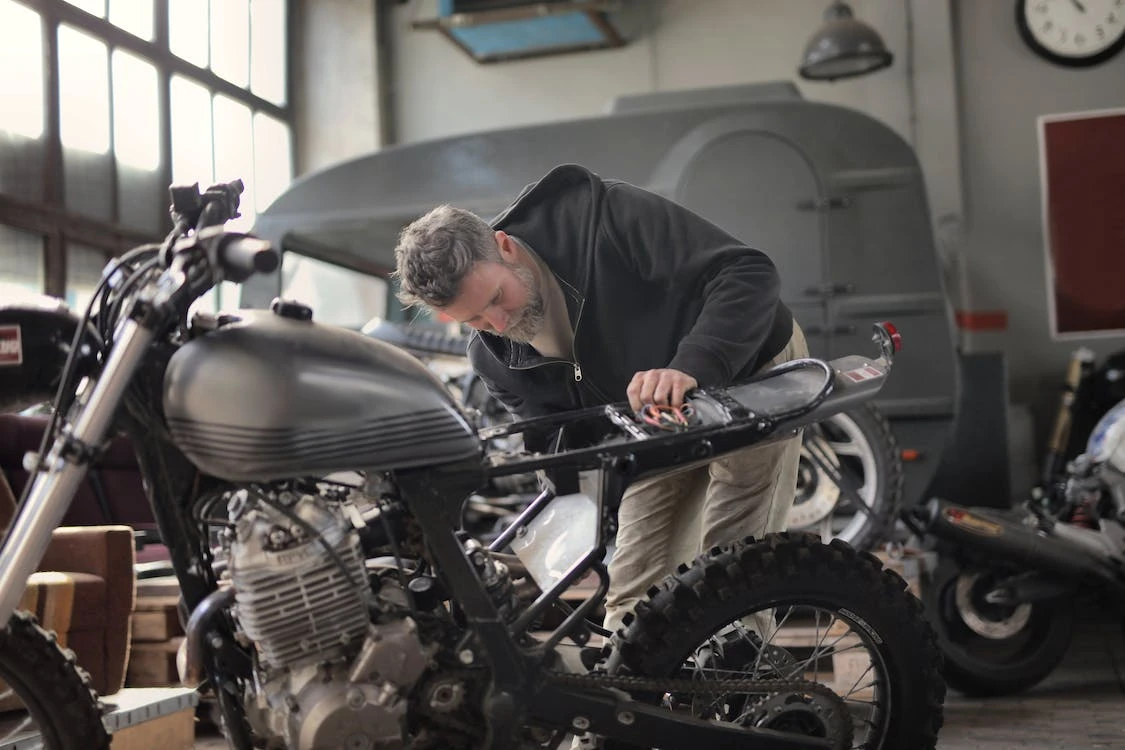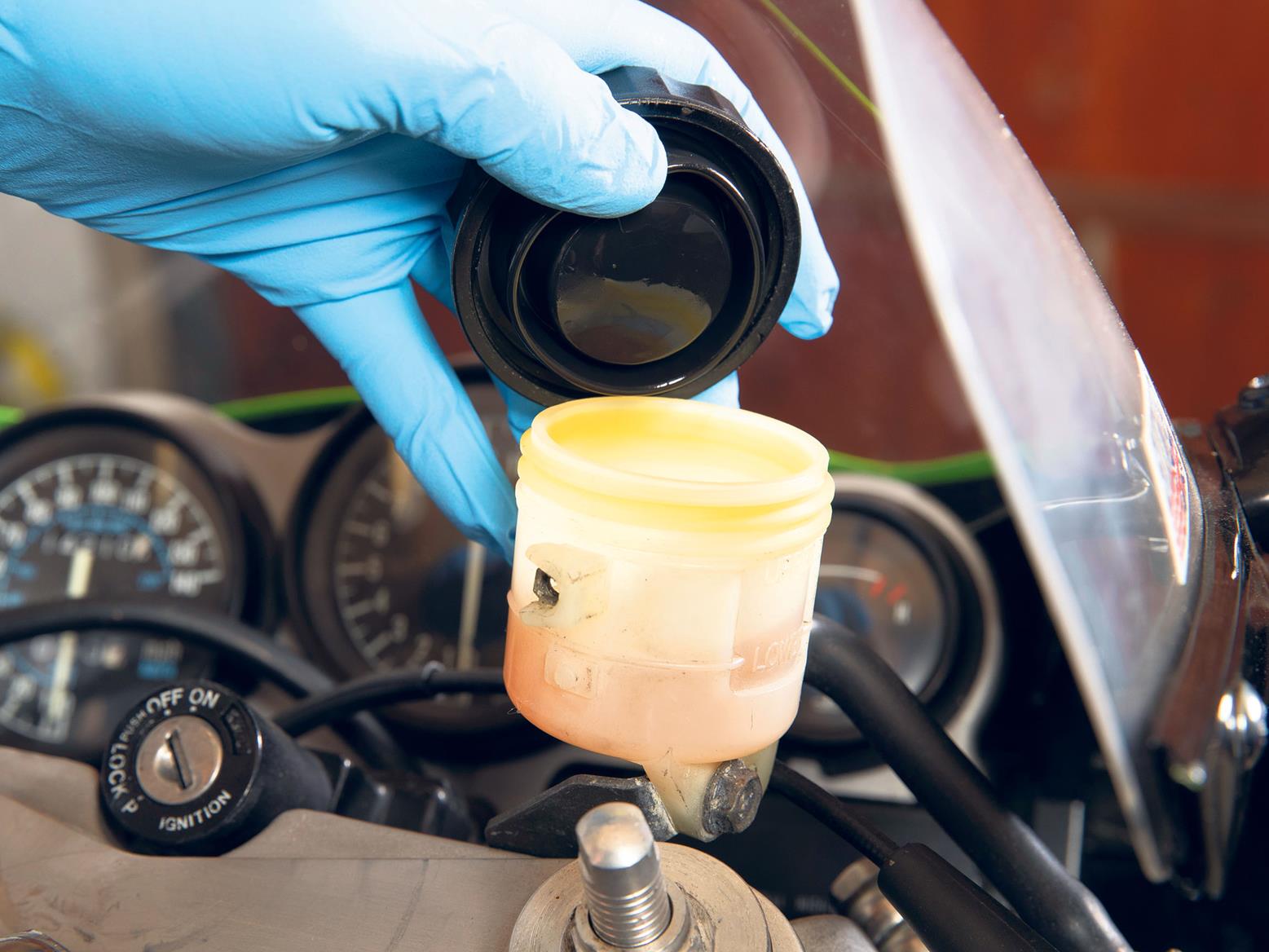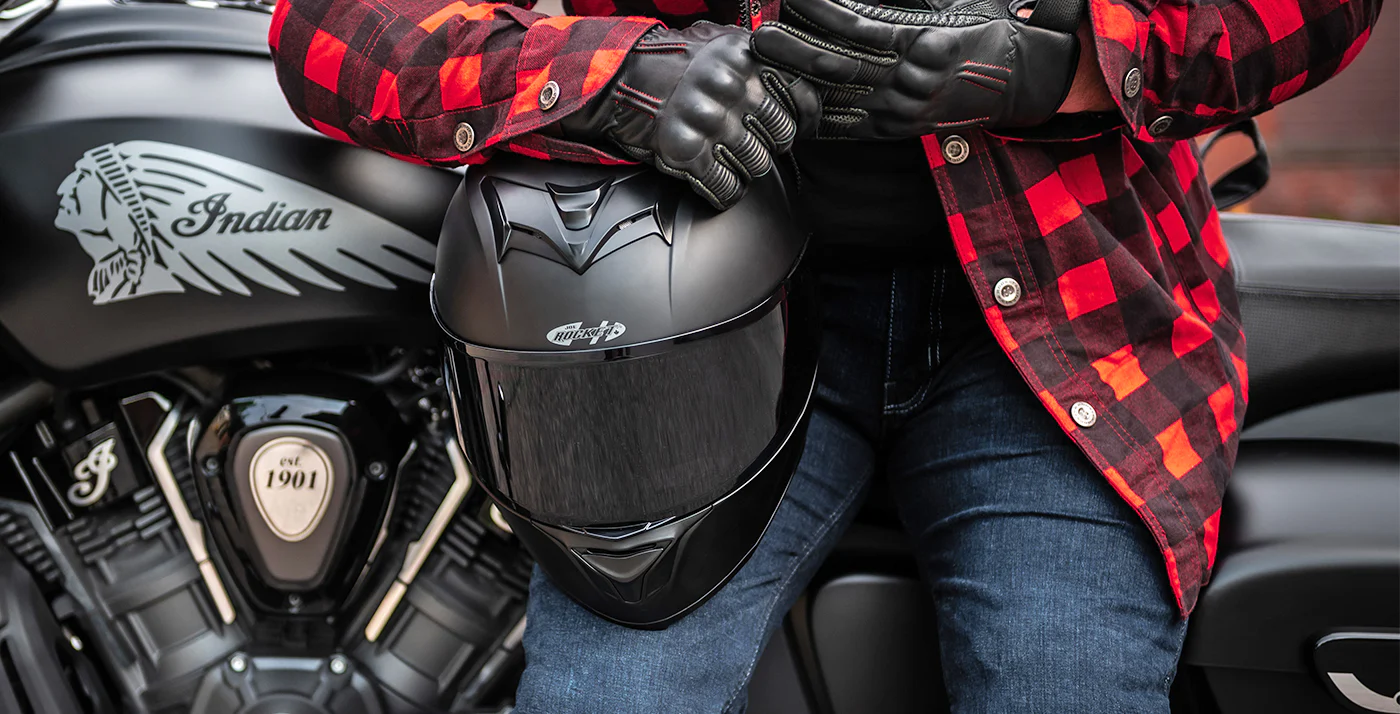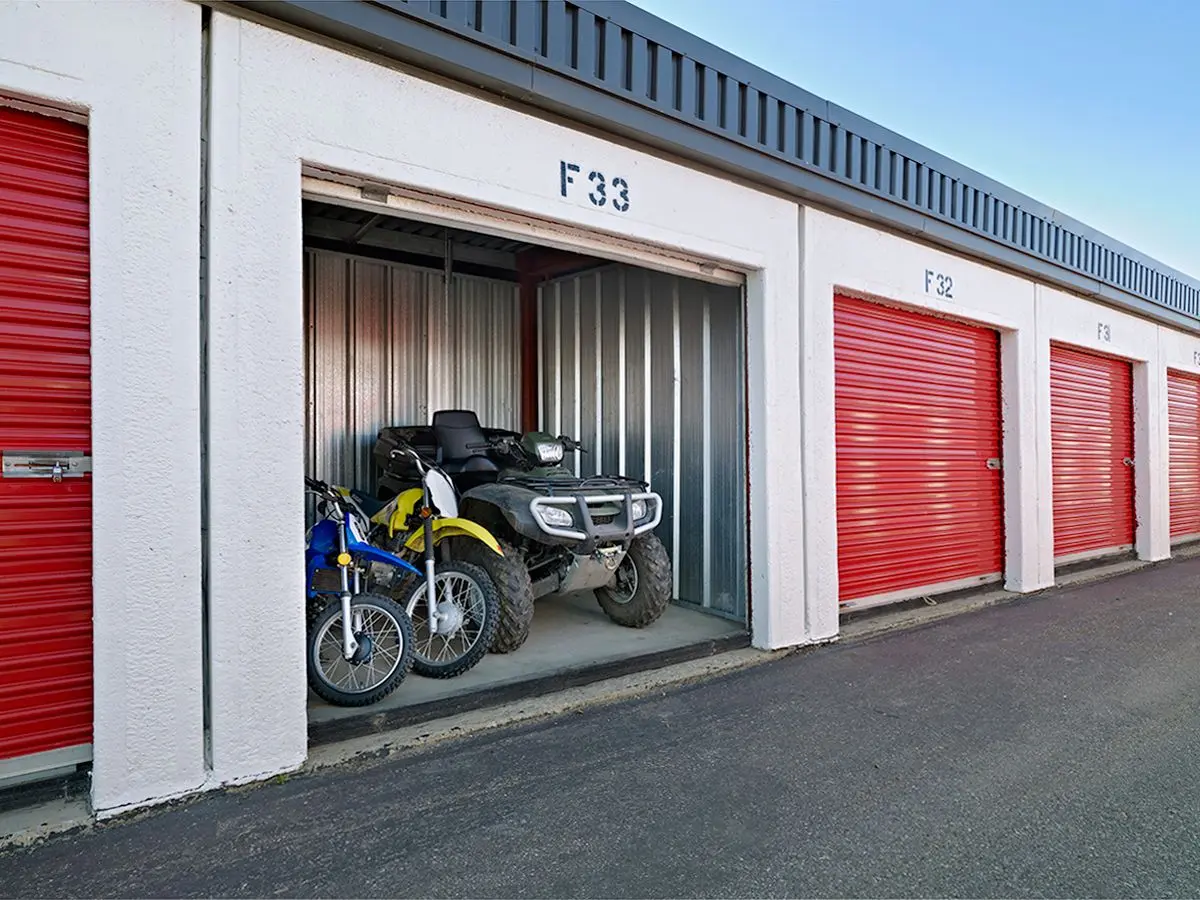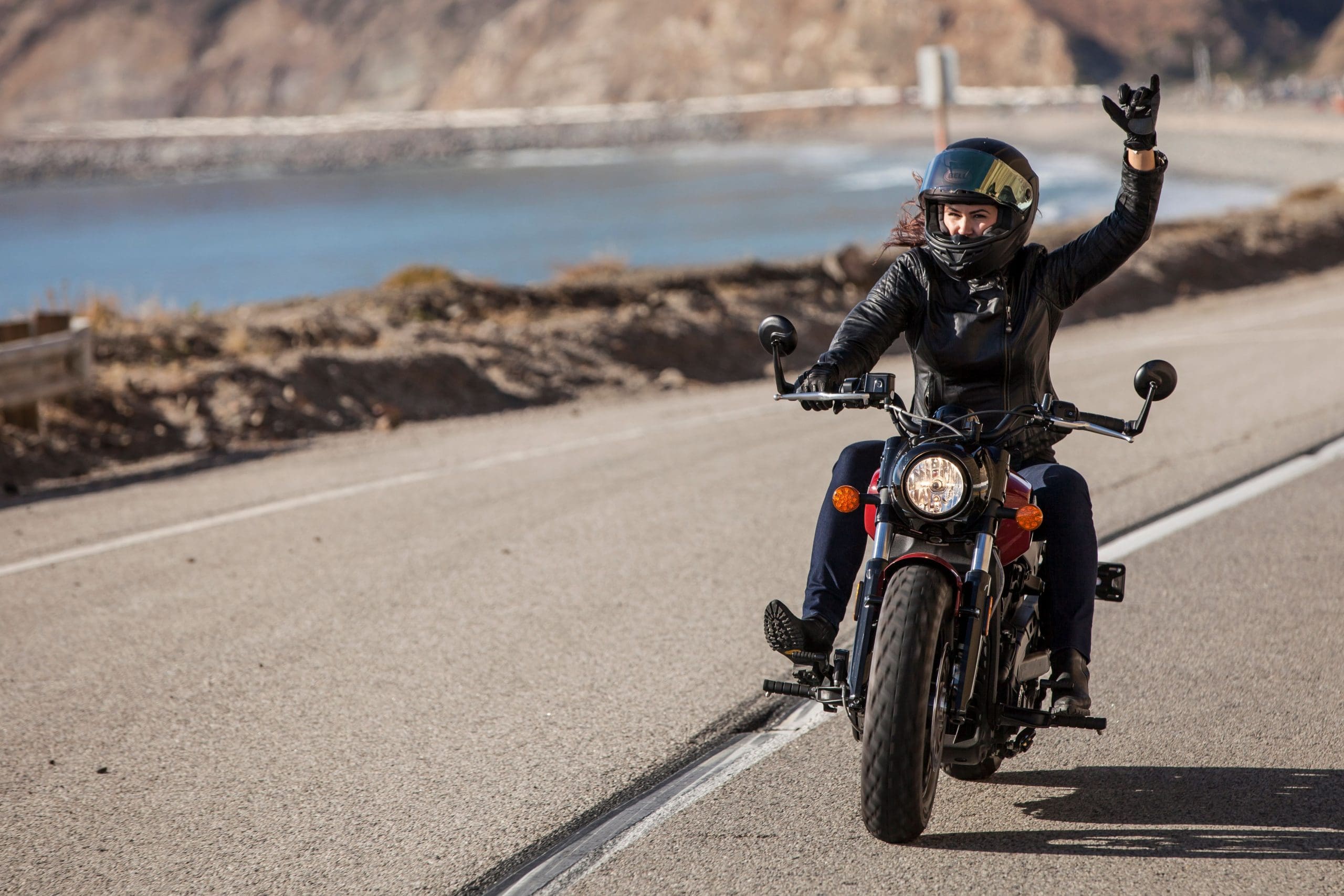For many motorcycle riders across North America, spring signals one thing: it is time to roll the bike out of storage and get back on the road. After months of cold weather and parked machines, the first ride of the season feels like freedom all over again. But before you throw on your gear and head for the hills, it is important to give your bike the attention it deserves.
Winter storage can be hard on a motorcycle if proper precautions aren’t taken. Even if you prepared your bike last fall, fluids can degrade, tires can lose pressure, and batteries can drain over time. The last thing you want on your first ride back is a mechanical issue that could have been prevented.
We’ll walk through the key steps for safely bringing your motorcycle out of storage and getting it ready to ride. We will also talk about why it makes sense to plan ahead for next season’s storage now, so you are not scrambling for a safe place to park your bike when the riding months come to an end.
Give Your Bike a Thorough Inspection
Your first step before firing up the engine should always be a visual inspection. This is your chance to catch potential problems early and avoid being stranded on the side of the road.
Check the Battery
If your battery was removed and connected to a tender over the winter, you are already ahead of the game. Reinstall it securely and make sure the connections are clean and tight. If the battery stayed in the bike without a charger, it is worth testing the voltage before turning the key. Many riders find that a battery left idle for several months will not hold a charge, which can lead to starting problems or electrical glitches.
If the battery is weak or shows signs of struggle, replace it now rather than taking chances.
Inspect Tires and Pressure
Tires are one of the most critical safety components on your bike. Check both tires for any cracking, dry rot, or flat spots from sitting in one position. Even with no visible damage, tire pressures almost always drop over the winter.
Refer to your owner’s manual for the correct psi and bring both tires back up to spec. Riding on underinflated tires not only affects handling but can also cause premature wear or even a blowout.
Look Over the Chain or Belt
If your bike uses a chain drive, take the time to clean and lubricate it. Surface rust can form when the bike sits for a long period, especially if the chain was not properly oiled before storage. Use a quality chain cleaner and lube, and check for proper tension.
Belt-driven motorcycles should have the belt inspected for fraying or cracking. Look for any signs of excessive slack or damage that could cause issues down the road.
Test Brakes and Cables
Pull both brake levers and check for firm, consistent pressure. Soft or spongy brakes could mean there is air in the lines or old, degraded brake fluid that needs to be replaced. Inspect your brake pads to ensure they have adequate thickness and that the rotors are clean and free of corrosion.
Also, check your clutch cable or hydraulic system. Make sure the throttle snaps back smoothly and there is no binding or stickiness in the controls.
Confirm Fluid Levels
Old fluids can break down over time, so it is worth checking all key fluids even if you topped them off before storage. Look at:
- Engine oil: If it looks dark or dirty, change it.
- Brake fluid: Should be clear and at the proper level. Replace if discolored.
- Coolant (for liquid-cooled bikes): Top off if low and inspect the condition.
- Fuel system: If you did not add a stabilizer last fall, your fuel may be stale. Consider draining old gas and refilling with fresh fuel.
Lights and Signals
Double-check your headlight, taillight, brake lights, and turn signals. Replace any burned-out bulbs and make sure your horn works. Visibility is your first line of defense, especially on busy roads where drivers might not be looking out for motorcycles after a long winter.
Start It Up and Take a Shakeout Ride
Once you have gone through your checks and topped off fluids, it is time to bring the engine back to life. Start the bike and let it idle for a few minutes while listening for any strange noises or vibrations. Check underneath for leaks and confirm that the oil pressure light turns off normally.
Do not plan a long-distance ride for your first outing. Instead, take a short local ride and pay close attention to how the bike handles. This is your opportunity to catch anything that might feel off before you commit to a full day on the road.
Gear Check: Are You Ready?
Your bike is not the only thing that needs inspection. Take a few minutes to look over your riding gear:
- Helmet: Check the manufacturer’s date and overall condition. Most helmets should be replaced every five years, or sooner if dropped.
- Gloves and jacket: Look for wear, especially in impact areas.
- Boots: Check the soles and make sure closures are secure.
- Armor and padding: Ensure it is properly placed and in good shape.
Riding with compromised gear is not worth the risk.
Plan Ahead for Storage: Fall Comes Faster Than You Think
While the excitement of spring riding takes center stage now, it is smart to think about your storage plans early. Waiting until the fall rush can leave you scrambling for space or paying higher rates at the last minute.
If you do not have a secure garage or shed, renting a dedicated storage unit is one of the best ways to protect your investment during the off-season. A proper storage facility keeps your bike away from moisture, pests, and theft, while climate control can prevent rust, battery issues, and damage from temperature swings.
For riders in the Northeast, Connecticut Storage Rentals offered by NSA Storage provides flexible options that help keep your bike safe until the next riding season. Booking early can help ensure you get the space and features you need.
Preparing for Long-Term Storage
When it comes time to put the bike away for the season, these simple steps can make a big difference:
- Wash and wax your motorcycle to prevent corrosion from dirt and debris.
- Add a fuel stabilizer to your tank and run the engine briefly to circulate it through the system.
- Disconnect or remove the battery and use a tender to maintain its charge.
- Inflate tires to the recommended pressure and, if possible, store the bike with wheels off the ground or move it periodically to avoid flat spots.
- Cover the bike with a breathable motorcycle cover to keep dust and moisture out without trapping condensation.
It’s Time To Ride
There is nothing quite like the feeling of getting back on your motorcycle after a long winter. Taking a little extra time to inspect and prep your bike ensures that your first ride of the season is as enjoyable and safe as possible. And while the open road calls now, a smart rider always keeps an eye on what comes next. Planning ahead for proper storage at the end of the season helps keep your motorcycle in top shape year after year.



